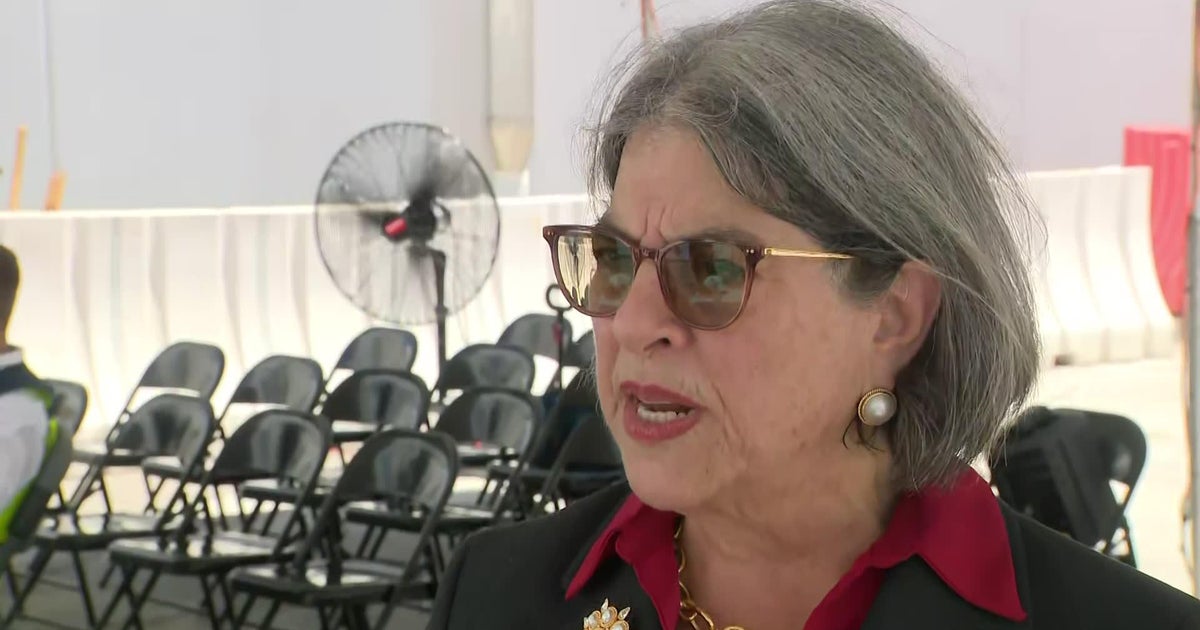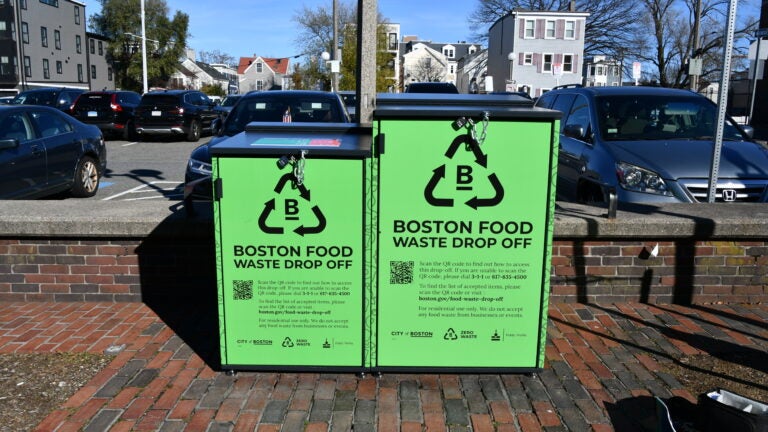Every month, we like to ask our staff about their favorite stuff — whether it’s tech, kitchen tools, or camping gear. What they answer gives us some interesting insights into what the folks here like to use when they’re at the job or enjoying some time off.
Technology
Floating wind turbine in Maine proves resilient in storm simulation, researchers say

Maine fishermen aim to sink Biden’s offshore wind farm plan
FOX Business’ Lydia Hu reports on President Biden’s wind farm plan opposed by Maine’s fisheries. New England Fishermen’s Stewardship founder Jerry Leeman explains how the plan poses a risk to marine life and the industry, saying ‘it’ll cripple us.’
- The University of Maine is contributing to the global effort to improve floating machines to harness wind over deeper offshore waters.
- Researchers envision turbine platforms floating in the ocean beyond the horizon, stretching more than 700 feet.
- Floating turbines are the only viable option for U.S. states to capture large-scale offshore wind energy in waters too deep for traditional turbines.
As waves grew and gusts increased, a wind turbine bobbed gently, its blades spinning with a gentle woosh. The tempest reached a crescendo with little drama other than splashing water.
The uneventful outcome is exactly what engineers aimed for.
The demonstration featuring a 13-foot-tall floating wind turbine in an indoor pool aimed to ensure it can withstand the strain of powerful water and wind when much larger versions are deployed in the ocean.
US’S FIRST LARGE OFFSHORE WIND FARM OFFICIALLY OPENS IN NEW YORK, WITH MORE TO COME
It’s the University of Maine’s contribution to a worldwide race to improve floating machines to tap wind that blows across deeper waters offshore, too deep to attach turbines to the seabed with permanent pilings.
The University of Maine’s first prototype of an offshore wind turbine is seen in this Sept. 20, 2013, file photo, near Castine, Maine. Floating turbines are the only way for some countries and U.S. states to capture a massive amount of offshore wind energy. (AP Photo/Robert F. Bukaty, files)
In the next decade, UMaine researchers said, they envision turbine platforms floating in the ocean beyond the horizon, stretching more than 700 feet skyward and anchored with mooring lines.
“These structures are massive,” said Anthony Viselli, chief engineer for offshore wind technology at the university’s Advanced Composites Center, after the demonstration wrapped up. “These would be some of the largest moving structures that humankind has endeavored to create. And there would be many of them.”
THREE GROUPS ARE SUING NEW JERSEY TO BLOCK AN OFFSHORE WIND FARM
As the technology advances, dozens of designs are being promoted by experts who see floating wind turbines as a way to address climate change by shifting away from burning fossil fuels.
Floating turbines are the only way some countries and U.S. states can capture offshore wind energy on a large scale. In the U.S. alone, 2.8 terawatts of wind energy potential blows over ocean waters too deep for traditional turbines that affix to the ocean floor, according to the National Renewable Energy Laboratory. That’s enough to power 350 million homes — more than double the number of existing homes in the U.S.
The first floating wind farm started operating off Scotland’s coast in 2017. In the United States, the Department of Interior two weeks ago proposed the first floating wind energy auctions for the Gulf of Maine, following lease auctions for the West Coast that began in 2022. The nearly 1 million acres up for auction off the New England coast could generate enough clean wind energy to power more than 5 million local homes, the department said.
UMaine is home to the nation’s largest team of engineers dedicated to floating offshore wind. Other big players include Equinor, which has installed a demonstration floating project of the coast of Norway; global company Principle Power, which has installed small-scale projects off Scotland and Portugal; and SBM Offshore, which has a demonstration project off France.
Floating offshore wind is still a nascent industry, however, making it expensive.
The Norwegian company Equinor postponed its Trollvind floating initiative, citing technology availability, rising costs and a strained timetable to deliver on the original concept.
BIDEN ADMIN APPROVES EIGHTH US OFFSHORE WIND PROJECT OFF MASSACHUSETTS COAST
Danish wind energy developer Ørsted decided to focus its efforts on fixed-bottom turbines, foregoing deeper offshore regions including Japan, Norway, Spain, Portugal and the U.S. West Coast. “We care a lot about affordability of renewable power, and floating wind is a lot more expensive than bottom-fixed,” said CEO Mads Nipper.
But others are moving forward.
Gazelle Wind Power is developing a modular platform system to make manufacture and assembly cost-effective and efficient.
“This is a global problem and this is an ideal solution in order to deliver power to shore,” said Gazelle Wind Power CEO Jon Salazar.
UMaine launched its first floating prototype a decade ago and became a surprise global leader after a study showed that the Gulf of Maine had the wind energy potential of 156 nuclear power plants, due to fast, consistent wind.
The state could meet all its home heating needs and power every car — if they were all electric vehicles — by tapping just 3% of that water. That improves the odds of successfully sharing the resource with fishermen, recreational boaters, the military and, of course, marine life. Indeed, the federal government’s lease proposal spares Maine’s key lobstering grounds from development, removing a potential obstacle.
Trailblazers in offshore wind are benefiting from work done by the oil industry, which engineered floating oil and gas rigs, said Habib Dagher, director of the Advanced Composites Center.
The university’s wind wave basin, which looks something like a swimming pool with wave and wind generators that can mimic ocean conditions up to a 500-year storm, takes that work to the next level.
On a recent day, the semi-submersible floating turbine was tethered to the bottom of the basin. Its 1:70 scale represented a real turbine standing about 800 feet (240 meters) tall atop a platform in the ocean. The goal is to have industrial scale turbines of 15 to 20 megawatts each, Dagher said.
Size and efficiency are keys to profitability. Larger wind turbines mean fewer are needed, reducing construction, installation and maintenance costs, Viselli said. With greater size and efficiency, developers envision only about 50 turbines needed to produce about the same amount of electricity as a nuclear power plant.
Full-size turbines generate peak power starting at about 20 mph. In powerful storms, they shut down automatically to avoid stressing the equipment or breaking. The mooring lines tethered to the ocean floor are made of rope nearly thick as a telephone pole and under heavy tension. That makes them safer for marine mammals.
For all the turbine technology, the platforms developed by UMaine can be built locally with concrete, a simple material that’s readily available. The university already has partners around the world interested in licensing its technology. The state of Maine plans to develop a port facility in the Searsport area to build the floating bases and attach turbines before sending them into the Gulf of Maine.
A brand new industry means some experiments in design will succeed and some will fail. And there is work to ensure that wind farms are good neighbors, overcoming objections from others using the ocean.
“We’re going to have some problems and we have to figure out how to roll up our sleeves and solve these problems,” Dagher said. “And I think we have no choice as a society but to do that.”

Technology
YouTube’s ‘Trending’ section is about to disappear

YouTube is preparing to sunset the Trending section that shows users which videos are currently going viral on the platform. The Trending page and Trending Now list will be removed within the “next couple of weeks,” according to YouTube, with the platform instead shifting its attention toward expanding YouTube Charts that rank top-performing content.
YouTube is directing users to lean on personalized recommendations and YouTube Charts to explore new videos ahead of the Trending page removal. YouTube Charts allow users to see the most popular content for specific categories, which currently includes music videos, podcasts, and movie trailers. The platform says that it will add more content category charts “over time,” and that trending gaming videos can still be found under the Gaming Explore page in the meantime.
“Back when we first launched the Trending page in 2015, the answer to ‘what’s trending’ was a lot simpler to capture with a singular list of viral videos that everyone was talking about,” the company said in a blog post. “But today, trends consist of many videos created by many fandoms, and there are more micro-trends enjoyed by diverse communities than ever before.”
Viewers now learn about viral video trends from a variety of different sources, including Shorts, search suggestions, and other platforms like TikTok, which YouTube says has significantly reduced Trending page traffic, “especially over the last five years.” Creators have also criticized YouTube for demanding far higher viewership numbers to appear in the Trending section compared to branded accounts that post movie trailers, TV clips, and other traditional media, suggesting the experience doesn’t entirely reflect what videos are actually popular on the platform.
Creators who use the Trending page to research video ideas are being directed to instead use the Inspiration Tab in YouTube Studio, which provides AI-generated content suggestions. YouTube also says it’s working on new ways to help boost discovery for up-and-coming creators on the platform, such as the Hype promotional system it released last year that lets viewers amplify videos to a platform-wide leaderboard.
Technology
Fake agent phone scams are spreading fast across the US

NEWYou can now listen to Fox News articles!
A disturbing wave of fake agent phone scams is sweeping across the United States, catching people off guard and draining their savings. These criminals do not just pretend to be someone you trust; they impersonate federal agents, threaten arrest, and demand payment on the spot. As the schemes become more sophisticated, the FBI and other law enforcement agencies are issuing urgent warnings. Moreover, the scams are spreading rapidly and becoming increasingly difficult to spot.
Sign up for my FREE CyberGuy Report
Get my best tech tips, urgent security alerts, and exclusive deals delivered straight to your inbox. Plus, you’ll get instant access to my Ultimate Scam Survival Guide – free when you join my CYBERGUY.COM/NEWSLETTER.
A woman receiving a fake scam phone call. (Kurt “CyberGuy” Knutsson)
How fake agent phone scams trick victims into sending money
Often, it begins with a phone call that appears legitimate. The number might display familiar initials, such as “FBI,” “US Marshals,” or even your local police department. Scammers use spoofing technology to fake caller IDs, making the call look official. During the call, the scammer creates panic with claims like:
- Your Social Security number has been frozen.
- A loved one is in jail and needs money for GPS monitoring.
- You missed a jury duty summons and now face arrest.
To avoid immediate legal trouble, victims are often instructed to pay immediately, usually through prepaid gift cards, cryptocurrency ATMs, or wire transfers. These demands are designed to be untraceable and irreversible. Importantly, the US Marshals will NEVER call you to collect money, the agency emphasized in a public warning.
Fake agent phone scams are targeting victims across the United States
Reports of these calls have come in from New York, Illinois, Virginia, and nearly every other state. Some victims have lost thousands of dollars. In Michigan, scammers increased their credibility by using the real names and ranks of local officers. Meanwhile, in Maryland, suspects posing as FTC agents even showed up in person twice to collect cash. This scam is not limited to phone calls. Text messages, known as “smishing” attacks, are also on the rise. One version targeted iPhone users with fake DMV payment demands. According to cybersecurity firm Guardio, smishing surged 773% in just one month.
Why fake agent phone scams succeed and how they manipulate trust
Fraudsters know how to exploit fear effectively. They count on the fact that most people will do almost anything to avoid arrest or protect a family member. By spoofing official numbers, they undermine our first line of defense: trust. However, it is not just about technology. Experts also warn of an emotional manipulation crisis. These scammers don’t just steal your money, they steal your identity too. As a result, victims feel violated, scared, and uncertain about whom to trust.

A man receiving a fake scam phone call. (Kurt “CyberGuy” Knutsson)
Fake agent phone scams are evolving with AI and new tech tricks
Concerns are growing about how far these scams could go. Law enforcement and cybersecurity experts warn that scammers may soon use:
- AI voice cloning to mimic real officials.
- Malicious apps that mimic legitimate agencies.
- Smartphone voice assistants, cameras, or microphones to harvest data.
While there’s no direct evidence of those advanced tactics yet, experts agree they’re coming, and fast.

A woman receiving a fake scam phone call. (Kurt “CyberGuy” Knutsson)
How to protect yourself from fake agent phone scams and spoofed calls
These scams are designed to trigger panic and override your judgment. But a few simple actions can protect you and your loved ones from falling victim. Stay sharp, stay skeptical, and follow these smart steps:
Hang up immediately
If someone calls claiming to be from a government agency and demands money, don’t explain or ask questions; just hang up. Real law enforcement will never ask for payment over the phone, and they won’t threaten you into silence.
Never pay with gift cards, crypto, or wire transfers
No legitimate government agency will ever ask you to settle a legal issue with a prepaid gift card or a trip to a Bitcoin ATM. These are hallmark signs of a scam, designed to move your money fast and leave no trace.
Don’t trust caller ID
The number on your screen might look official, but spoofing technology can fake any number, even 911 or the FBI. If the caller creates pressure or fear, hang up and verify using an official number from the agency’s website.
Report the call
Even if you don’t fall for the scam, reporting it can help authorities track these operations. Contact your local FBI field office, your state’s Attorney General, or file a report at reportfraud.ftc.gov. Every report helps build a stronger case.
Talk to your loved ones
Scammers often target people who are more likely to believe a false threat, especially seniors or non-native English speakers. Have a conversation with family and friends so they know what to look out for and what to do if they receive a suspicious call or message.
Scrub your personal data from the internet
Many scammers do their homework before making contact. They might already know your name, address, or even a relative’s name to sound more convincing. Using a reputable personal data removal service can reduce the chances of your private information being misused. The less data available online, the fewer hooks criminals have to grab onto.
While no service can guarantee the complete removal of your data from the internet, a data removal service is really a smart choice. They aren’t cheap – and neither is your privacy. These services do all the work for you by actively monitoring and systematically erasing your personal information from hundreds of websites. It’s what gives me peace of mind and has proven to be the most effective way to erase your personal data from the internet. By limiting the information available, you reduce the risk of scammers cross-referencing data from breaches with information they might find on the dark web, making it harder for them to target you.
Check out my top picks for data removal services and get a free scan to find out if your personal information is already out on the web by visiting Cyberguy.com/Delete.
Get a free scan to find out if your personal information is already out on the web: Cyberguy.com/FreeScan.
Don’t click suspicious links
Some scams are shifting from voice calls to text messages. If you receive a message claiming to be from the DMV, IRS, or law enforcement, don’t click any links. These texts (known as “smishing” attacks) can trick you into entering personal info or downloading malware.
The best way to safeguard yourself from malicious links that install malware, potentially accessing your private information, is to have antivirus software installed on all your devices. This protection can also alert you to phishing emails and ransomware scams, keeping your personal information and digital assets safe.
Get my picks for the best 2025 antivirus protection winners for your Windows, Mac, Android & iOS devices at CyberGuy.com/LockUpYourTech.
Kurt’s key takeaways
These criminals are getting smarter, but so can we. Staying informed and understanding what real law enforcement will never do is key to protecting yourself and your family. Authorities will not threaten you over the phone, demand gift cards or cryptocurrency, or ask you to prove your innocence with money. If something feels off, trust your gut. Also, spread the word, because the more people who know, the harder it is for these criminals to succeed.
Should the government be doing more to protect us from fake agent phone scams? Let us know by writing us at Cyberguy.com/Contact.
Sign up for my FREE CyberGuy Report
Get my best tech tips, urgent security alerts, and exclusive deals delivered straight to your inbox. Plus, you’ll get instant access to my Ultimate Scam Survival Guide – free when you join my CYBERGUY.COM/NEWSLETTER.
Copyright 2025 CyberGuy.com. All rights reserved.
Technology
Some Verge-favorite gadgets are cheaper during Prime Day 2025

Now that Amazon’s Prime Day sales have come again, we’ve looked through some of our recent “favorites” articles and found deals on a lot of the devices we like. So, we thought we’d list a few in case you have read about them in the past and thought, well, that sort of sounds good, but it’s a bit pricey. (Or — that’s pretty cheap, but maybe I’ll wait until the price goes down even more…)
Here some of our staff’s most-liked gear that is now on sale during Prime Day.

If you’re itching to get out on a bike ride even when it’s 85-plus degrees, you don’t want to be stuck without an adequate supply of water. I only have room for one drink holder on my bike, so I’ve found that it’s just far more convenient to carry water on my back with the aptly named CamelBak Hydrobak hydration pack. It’s a lightweight backpack that holds up to 1.5 liters of water, which it says is enough for a two-hour bike ride.
The backpack also comes with a handy straw that you just lift up and drink from, preventing you from having to stop and drink from your water bottle (unless you’re coordinated enough to take a sip while riding, which I am not). It also keeps your water relatively cool even when the sun is beating down your back.
Aside from storing water, there’s a zipper pocket where you can store car keys, your ID, and other small items. It’s not just ideal for biking, either. Many people use the CamelBak Hydrobak on long hikes, runs, and even for music festivals. — Emma Roth, news writer


I try to bring a Bluetooth speaker everywhere with me when the weather’s good. A pool party, a park day, a golf outing, a hang on the back patio — it’s all better with music! There are obviously lots of good speakers out there, but for me the UE Wonderboom 4 is the perfect one. It’s only $100, it’s small but loud enough to work just about anywhere, its battery lasts all day and then some, it’s waterproof, and it floats. (All the colors look nice, by the way, but… get the blue one.) There are fancier speakers with more features, and the $200 Megaboom does sound a lot better, but I keep a Wonderboom in my trunk, and it has made me the party hero more times than I can count. — David Pierce, editor-at-large


My biggest deterrent to spending some time outside are bugs, mosquitos specifically. I wish they’d bug off. They have me looking like I’m doing interpretive dancing to avoid being poked. Thankfully, a gadget that I got last year has made it so that I don’t need to be (as) protective of my exposed skin.
Thermacell makes rechargeable and refillable mosquito repellers. I got the E-Series model, which creates a safe zone where you likely won’t be bitten. It lasts a little over five hours per charge, meaning I get more than one use out of it before needing to charge it again. Just be sure not to use it in an environment where there isn’t proper ventilation; Thermacell notes that its ingredients shouldn’t be a concern for people or pets, but I don’t want too much insecticide around my loved ones — or my food. — Cameron Faulkner, commerce editor


$24
Small, convenient 5,000mAh charger with foldable USB-C connector; marketed for later iPhones but usable for Android phones as well.
I have a tendency to hold on to my phones as long as they work reasonably well, and although I must admit I’ve been tempted by the Pixel 9A, I will probably still be using my Pixel 6 for a bit longer. The only issue that I’m starting to hit is battery life — after over three years of use, it’s not unexpected that I will sometimes hit the 20 percent mark toward the end of the day. So I recently realized that I’m going to have to start carrying around a portable charger. At first, I was going to go with the 20,000mAh Anker Zolo Power Bank, which had gotten a good number of recommendations. But it weighs over 11 ounces and when I dropped it into my bag, it felt like I had added a small brick. That’s why I traded it in for the less powerful but much lighter Anker Nano Power Bank, which plugs into my phone’s USB-C slot like a small add-on peripheral. The Nano weighs only 3.5 ounces and supplies 5,000mAh of battery power — enough to keep me going to the end of the day. And it comes in several pale colors (I chose Ice Lake Blue), which means I can see it more easily in the dark reaches of my bag. — Barbara Krasnoff, reviews editor


$20
Cooks up to seven eggs three different ways; comes with an omelet bowl that also steams vegetables.
My body composition has become about 70 percent egg in the blissful month since I bought this cooker. I never want to buy new countertop kitchen appliances, because almost every time I do, they end up dusty in the back of the cabinet, but I’m amazed by how useful this simple Hamilton Beach Egg Cooker is. I can prepare hard- or soft-boiled eggs to perfect consistency in minutes (with no cleanup!), and having it on hand has dramatically cut back on my bacon, egg, and cheese sandwich habit. So it’s good for my cholesterol and my bank account. — Kristen Radtke, creative director


$23
Stainless steel 18-ounce water bottle with double-wall vacuum insulation.
This is a sturdy stainless steel water bottle that keeps water cold as I sip it throughout my workday. What more could you ask for? I take it on trips, too, and while it’s got a few dents from some drops onto concrete, I don’t really care. If anything, the dents add some character and make it mine.— Jay Peters, news editor


$90
An 8-quart 11-in-1 air fryer and electric pressure cooker that air fries, steams, slow cooks, sautés, dehydrates, and — in other words — gives you a world of cooking features on your counter.
For the past few years, the Instant Pot has been a staple in my kitchen. From making rice to slow-cooking stews and even frying up chicken, it can do just about anything. The best part is that the Instant Pot can cook most recipes in a fraction of the time it would take in the oven or on the stove. Rice, for example, takes just six minutes to cook (not counting the amount of time it takes to build pressure), and there’s no fussing with covering the pot or adjusting the heat. Sometimes, it’s just easier — and much less stressful — to let the Instant Pot take the wheel. — Emma Roth, news writer


$50
Lightweight, 21-speed hand blender that’s easy to use and put away.
How often do you blend things? Is it never? Maybe the reason is that taking out, assembling, and cleaning up after a normal blender is just way too much work. Do you know how many sauces I’ve thickened since getting an immersion blender? This thing is small, quick to set up, and you can mostly clean it with just a blast under the faucet. You’re going to blend so many things. — Jacob Kastrenakes, executive editor


$19
This reusable sealing rod locks air and moisture out to prevent your snacks from going stale, prevents freezer burn, and keeps food fresh longer.
It’s kind of weird how much I like our Gripstics. Bag of chips open? Quick, grab a Gripstic. Kids vibing between two different cereals this week? A well-placed Gripstic will ensure they don’t get all squishy. Tiny package of chocolate chips you used for a recipe that is now kind of open in your cupboard for who knows how long? Just fold the top over, slide a Gripstic on it — the small blue one, thank you — and stop worrying so much.
I don’t know about you or your family’s shopping and eating habits, but try as we might to shop on the outside walls of the grocery store, we inevitably come home with many products packaged in single-use plastic bags. That in and of itself is a frustration, only compounded by those same products going bad if they’re not stored properly. The Gripstics are a simple solution to this universal problem, and one that I’m certain has paid for itself many times over. — Christopher Grant, group publisher
-

 Business1 week ago
Business1 week agoSee How Trump’s Big Bill Could Affect Your Taxes, Health Care and Other Finances
-

 Culture1 week ago
Culture1 week ago16 Mayors on What It’s Like to Run a U.S. City Now Under Trump
-

 Science1 week ago
Science1 week agoFederal contractors improperly dumped wildfire-related asbestos waste at L.A. area landfills
-

 Politics6 days ago
Politics6 days agoVideo: Trump Signs the ‘One Big Beautiful Bill’ Into Law
-

 News1 week ago
News1 week agoVideo: Who Loses in the Republican Policy Bill?
-

 Politics1 week ago
Politics1 week agoCongressman's last day in office revealed after vote on Trump's 'Big, Beautiful Bill'
-

 Technology1 week ago
Technology1 week agoMeet Soham Parekh, the engineer burning through tech by working at three to four startups simultaneously
-

 World6 days ago
World6 days agoRussia-Ukraine war: List of key events, day 1,227














